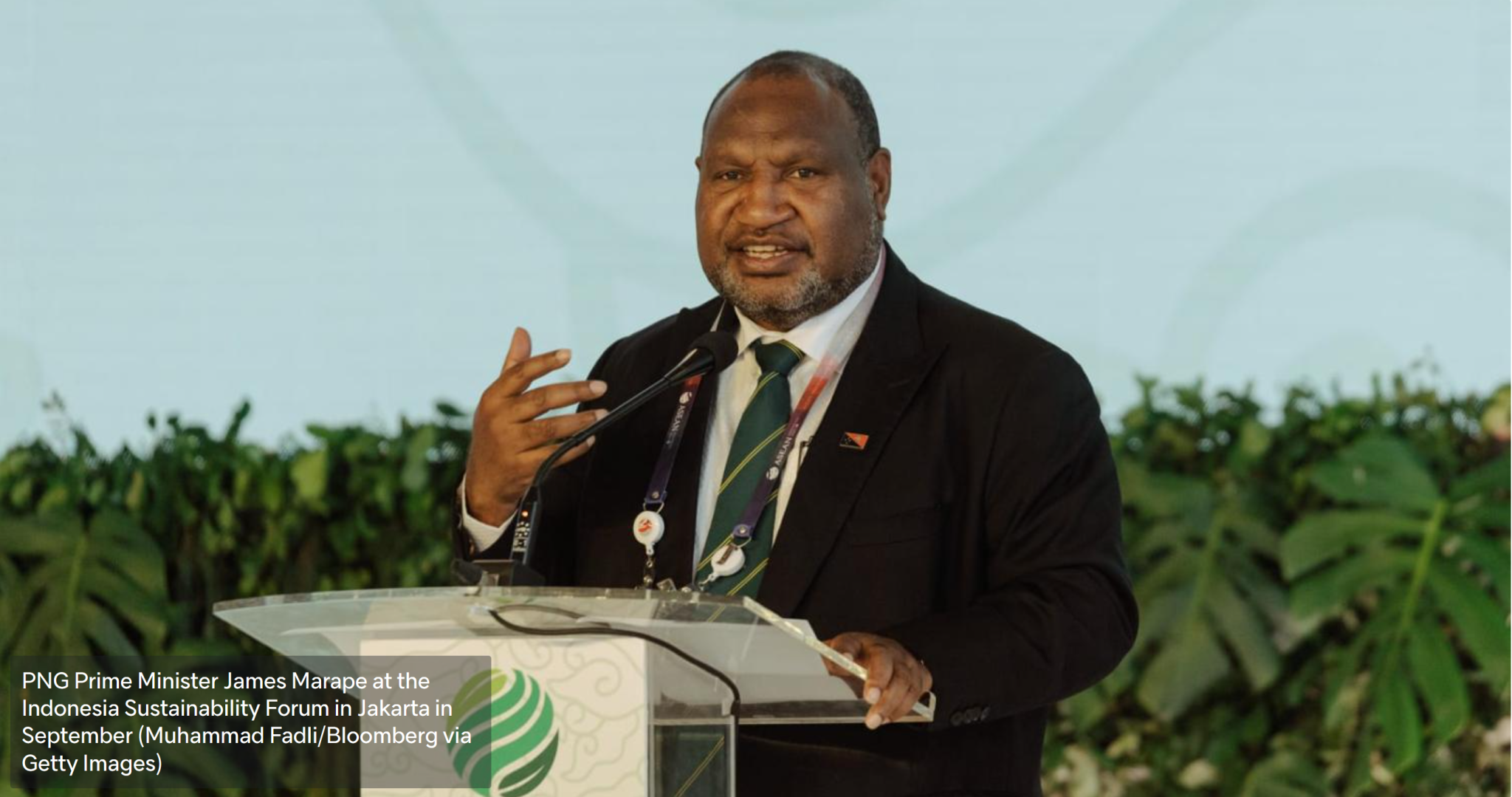The latest Pacific Aid Map shows the PNG debt burden is growing and risks loom on the horizon.
Data on official development finance is hard to come by in Papua New Guinea. The Lowy Institute’s Pacific Aid Map fills some of the gap, this year revealing that loans (which come with varying rates of interest obligations) are on the rise while grants (provided for specific projects) have stagnated between 2008 and 2021. That shift should be seen as a warning: PNG must carefully manage the increasing debt to safeguard development gains.
Where grants are provided to PNG, they tend to be concentrated in the public sector to boost good governance. Grants devoted to health and education have not increased significantly, and certainly are failing to keep pace with needs – recently PNG recorded increases in tuberculosis and HIV cases.
Australia gave three-quarters of all PNG grants, with 40 per cent spent on strengthening governance. This includes programs such as the PNG Governance Facility and the PNG-Australia Law and Justice Partnership. Australia accounts for 69 per cent of total aid spent in the governance sector. A positive outcome is that governance grants, along with domestic anti-corruption efforts, have contributed to PNG’s Worldwide Governance Indicator control of corruption improving its global ranking by 19 places between 2008 and 2021.
Grants may have stagnated, but development challenges have only grown. Although real GDP grew by 4.1 per cent on average annually between 2008 and 2021, living standards improved more slowly as real non-resource GDP per capita grew by an average of one per cent annually. Life is getting harder for the person on the street.
Formal sector employment (comprising a tenth of PNG’s workforce) declined over the past decade to be far lower than its 2013 resource boom level. We don’t have much insight into the informal sector, but it’s unlikely to be better. Government revenues are at risk of falling after every spike in resource revenue, while health and education costs have risen steadily.
In the face of these significant development challenges, development finance to PNG has shifted to be dominated by loans. This change carries long-term implications. Aid levels increased beginning in 2018, but the shift to loan dependency began in 2019. A large earthquake in 2018 explains the increase in grants for disaster relief in 2018. In 2019, PNG experienced a change in government, with the new government shifting from domestic to foreign debt to finance its deficits. The Covid-19 pandemic accelerated PNG’s dependency on loans as lockdowns put a dent in government revenue.
Official development finance loans to PNG take two forms, concessional and non-concessional loans. Concessional loans have more favourable terms and are often easier to repay.
The growth in concessional loans to PNG is extraordinary, illustrated by the chart below from the Pacific Aid Map. Germany and the World Bank were PNG’s only two creditors in 2008, giving a combined US$2.5 million in real concessional loans. By 2021, the Asian Development Bank, China, the European Union, International Monetary Fund, Japan, and the Organisation of the Petroleum Exporting Countries had joined, providing a combined US$522 million in real concessional loans.
Three development partners provided the most in concessional loans to PNG. Of the US$3.2 billion in concessional loans PNG received between 2008 and 2021, China provided close to a third, followed by the ADB and the World Bank. China has largely financed economic infrastructure, such as telecommunications and road transport. Similarly, the ADB has mainly financed road and air transport, while the World Bank concentrates on road transport and government revenue mobilisation. Improving telecommunications and road transport is a development goal underpinning PNG’s Vision 2050 plan. Financing these priorities is important given only 3.8 million people in the country have access to the internet for a population of 11.8 million, and only 13 per cent of roads are in good condition.
Non-concessional loans – funds lent at commercial rates – exceeded concessional loans, which means higher repayments are coming down the road. PNG took on just under US$4 billion in non-concessional loans between 2008 and 2021, and its three main creditors were the ADB, Australia, and China. Although China is rarely flexible about repayments in hard times, PNG is looking to it for more loans having just deposited US$200,000 of the US$1 million required for membership in the China-dominated Asia Infrastructure Investment Bank (AIIB). Other creditors are more understanding, such as when Australia agreed to roll-over its US$300 million loan to PNG in 2020.
In the years ahead, PNG faces some significant risks with its debt. Rising global interest rates have caused the rate on ADB and World Bank loans to increase from1 2.25 to 5.31 per cent, meaning PNG has had to pay an additional K273 million (US$72.7 million) in interest this year. Other risks include commodity price fluctuations, currency depreciation, and state-owned enterprise debt that is not listed in official debt figures, but which government guarantees.
Taken together, official development finance makes a useful and targeted contribution. However, the shift in development assistance away from grants to loans is concerning given PNG is at high risk of debt distress and likely to face external shocks from climate change and commodity market fluctuations in the future. Securing sustainable development will require greater availability of grants, especially for public goods, flexible loans, and partnerships to build productive capacity.

Contributor: Maholopa (Maho) Laveil.
The post Loans, not grants, already proving costly for PNG first appeared on Foundation for Development Cooperation.


